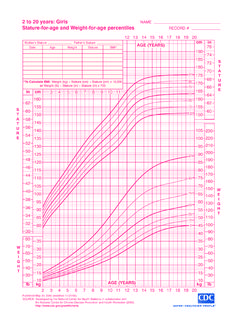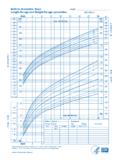Transcription of Guideline: Term small for gestational age baby
1 Maternity and NeonatalClinical GuidelineQueensland Health Clinical Excellence Queensland Term small for gestational age newborn baby Queensland Clinical Guideline: Term small for gestational age newborn baby Refer to online version, destroy printed copies after use Page 2 of 20 Document title: Term small for gestational age newborn baby Publication date: March 2022 Document number: Document supplement: The document supplement details development processes and implementation activities and is integral to and should be read in conjunction with this guideline. Amendments: Full version history is supplied in the document supplement. Amendment date: March 2022 Replaces document: Author: Queensland Clinical Guidelines Audience: Health professionals in Queensland public and private maternity and neonatal services Review date: March 2027 Endorsed by: Queensland Clinical Guidelines Steering Committee Statewide Maternity and Neonatal Clinical Network (Queensland) Contact: Email: URL: Disclaimer This guideline is intended as a guide and provided for information purposes only.
2 The information has been prepared using a multidisciplinary approach with reference to the best information and evidence available at the time of preparation. No assurance is given that the information is entirely complete, current, or accurate in every respect. The guideline is not a substitute for clinical judgement, knowledge and expertise, or medical advice. Variation from the guideline, taking into account individual circumstances, may be appropriate. This guideline does not address all elements of standard practice and accepts that individual clinicians are responsible for: Providing care within the context of locally available resources, expertise, and scope of practice Supporting consumer rights and informed decision making, including the right to decline intervention or ongoing management Advising consumers of their choices in an environment that is culturally appropriate and which enables comfortable and confidential discussion.
3 This includes the use of interpreter services where necessary Ensuring informed consent is obtained prior to delivering care Meeting all legislative requirements and professional standards Applying standard precautions, and additional precautions as necessary, when delivering care Documenting all care in accordance with mandatory and local requirements Queensland Health disclaims, to the maximum extent permitted by law, all responsibility and all liability (including without limitation, liability in negligence) for all expenses, losses, damages and costs incurred for any reason associated with the use of this guideline, including the materials within or referred to throughout this document being in any way inaccurate, out of context, incomplete or unavailable. Recommended citation: Queensland Clinical Guidelines. Term small for gestational age newborn baby. Guideline No. Queensland Health.
4 2022. Available from: State of Queensland (Queensland Health) 2022 This work is licensed under a Creative Commons Attribution-NonCommercial-NoDerivatives International licence. In essence, you are free to copy and communicate the work in its current form for non-commercial purposes, as long as you attribute Queensland Clinical Guidelines, Queensland Health and abide by the licence terms. You may not alter or adapt the work in any way. To view a copy of this licence, visit For further information, contact Queensland Clinical Guidelines, RBWH Post Office, Herston Qld 4029, email For permissions beyond the scope of this licence, contact: Intellectual Property Officer, Queensland Health, GPO Box 48, Brisbane Qld 4001, email Cultural acknowledgement We acknowledge the Traditional Custodians of the land on which we work and pay our respect to the Aboriginal and Torres Strait Islander Elders past, present and emerging.
5 Queensland Clinical Guideline: Term small for gestational age newborn baby Refer to online version, destroy printed copies after use Page 3 of 20 Flow Chart: Summary Term small for gestational age newborn baby Queensland Clinical Guideline: Term small for gestational age newborn baby. Flowchart: Care of baby: SGA/GRNT hermoregulation Promote skin to skin Check temperature before feeds (at least first 24 hours) Delay first bathMetabolic Monitor as clinically indicated: o Blood glucose o Calcium o JaundiceFeeding Aim is to achieve gradual weight gain Individualise feeding plan Feed at least third hourly If PDHM/formula feeding, balance quota with tolerance If intolerance seek review Consider intravenous therapy or gavage feeds as requiredDischarge considerations Feeding weight Maintaining temperature Jaundice Parental readiness and ability to engage with follow-upFollow-up Early post discharge appt Assess growth and development up to 2 yearsSuspected SGA/GRNCare at birth Anticipate need for resus Immediate drying/warmth Consider paired BG/lactate Support delayed cord clamping (unless required to move for resus)
6 Skin to skin Recommend placental histopathology Feed within 30 60 minutesAssessment Review history Review EDD Plot BW, L, HC on growth charts Physical examination Assess for features of GRN Other assessments as indicated Document findingsAdditional care Additional surveillance whilst minimising mother, baby separation Low threshold for escalation of care Referral as indicated Parental information and supportGrowth restriction of the newborn (GRN)Risk factors Primip or grand-multip, short interpregnancy interval Ethnicity ( Aboriginal or Torres Strait Islander) Low socio-economic status Age < 16 or > 35 years Suspected FGR Previous FGR, SGA, stillbirth Co-morbidities ( obesity) Substance use ( smoking) Mental illness or eating disorder Health implications Lower Apgars/acidosis Respiratory compromise Hypothermia Hypoglycaemia Hypocalcaemia Jaundice Feeding intolerance Longer term health impacts o Neurological delayso Obesityo Metabolic disordersDiagnostic criteria BW < 3rd percentile OR 3 or more of:o BW < 10th percentileo L < 10th percentileo HC < 10th percentileo Suspected FGRo Current pregnancy risk factor ( congenital infection, hypertension, pre-eclampsia, diabetes) BG blood gas, BMI body mass index, BW birth weight , EDD estimated due date, FGR fetal growth restriction, GRN growth restriction in the newborn, L length, HC head circumference, PHDM pasteurised human donor milk, SGA small for gestational age, Resus resuscitation, < less than,> greater than Queensland Clinical Guideline.
7 Term small for gestational age newborn baby Refer to online version, destroy printed copies after use Page 4 of 20 Table of Contents Abbreviations .. 5 Definitions .. 5 1 Introduction .. 6 6 Clinical standards .. 6 2 Terminology .. 7 3 Growth and health .. 8 Short term health risks .. 8 Longer term health outcomes .. 8 4 Assessment and diagnosis .. 9 Risk factors .. 9 Assessment .. 10 Growth 11 Quick guide estimates to growth restriction .. 11 Diagnosis and investigations .. 12 5 Supportive care .. 13 Newborn care .. 13 Infant feeding .. 14 Parental support .. 14 6 Discharge planning and follow-up .. 15 References .. 16 Appendix A: Fenton Growth Charts (boys and girls) .. 18 Acknowledgements .. 20 List of Tables Table 1. Queensland birth data .. 6 Table 2. Clinical standards .. 6 Table 3 Terminology .. 7 Table 4. Short term health implications .. 8 Table 5. Longer term health outcomes.
8 8 Table 6. Risk factors .. 9 Table 7. Assessment .. 10 Table 8. Growth charts .. 11 Table 9. Estimates of growth restriction using Fenton growth charts .. 11 Table 10. Diagnostic and investigations .. 12 Table 11. Newborn care .. 13 Table 12. Infant feeding .. 14 Table 13. Parental support .. 14 Table 14. Discharge and follow-up .. 15 Queensland Clinical Guideline: Term small for gestational age newborn baby Refer to online version, destroy printed copies after use Page 5 of 20 Abbreviations AC Abdominal circumference EBM Expressed breastmilk EFW Estimated fetal weight FGR Fetal growth restriction GRN Growth restriction in the newborn/neonate SGA small for gestational age SUPC Sudden unexpected postnatal collapse Definitions Anthropometry Study of measurements and proportions of the human body. Feeding interval The interval between start of one feed and start of next feed (start to start) Growth velocity The slope of change in fetal biometric percentiles based on gestational age across at least two ultrasounds during pregnancy ( 18 weeks gestation and 32 weeks gestation).
9 Neonatal unit In this guideline, neonatal unit, is used to mean any clinical area where specialised observation, monitoring, and baby care is provided. Sudden unexpected postnatal collapse (SUPC) The sudden cardiorespiratory collapse within the first seven days of life of an apparently healthy newborn born greater than 35 weeks gestation Term pregnancy Gestation greater than or equal to 37 weeks and less than 42 gestational weeks. Further classifications include: o Early term (37+0 38+6 weeks) o Full term (39+0 40+6 weeks) o Late term (41+0 41+6 weeks) o Post term (42+0 and beyond). Queensland Clinical Guideline: Term small for gestational age newborn baby Refer to online version, destroy printed copies after use Page 6 of 20 1 Introduction Growth is a dynamic process that is assessed over time and is compared to a hypothetical growth potential, represented in growth charts. Human growth is at its greatest during the second half of pregnancy, resulting in a six-fold increase in An interruption in intra-uterine growth places the fetus/baby at increased risk of adverse perinatal mortality and morbidity ( metabolic conditions, neurodevelopmental delay, stillbirth).
10 2,3 Obstetric management is focused on identifying the possibility of growth restriction, the underlying causes or contributing factors, monitoring fetal wellbeing during pregnancy and planning birth (timing location, mode of birth) to optimise outcomes. After birth, individual assessment and risk profiling is essential to identify newborn babies with growth restriction and to balance clinical intervention for improved ,5 This guideline focuses on the term newborn baby (37+0 41+6 weeks gestation) who is small for gestational age (SGA) and/or with growth restriction of the newborn (GRN), and is also applicable to the post-term SGA baby. Incidence In Queensland, approximately 7% of term babies are born less than the 10th Aboriginal and/or Torres Strait Islander babies are disproportionately represented within the low birth weight Table 1. Queensland birth data Year Births at term (n) Indigenous status Birth weight < 3rd percentile (%) Birth weight > 3rd and < 10th percentile (%) Indigenous Not Indigenous Indigenous Not Indigenous 2016 56,952 3,662 5 2017 54,607 3,632 5 2018 55,023 3,670 2019 54,755 3,920 8 2020 54,214 3,830 5 Source: Perinatal Data Collection, Department of Health, Department of Health (Queensland)-Statistical Services Branch, Clinical standards Table 2.













